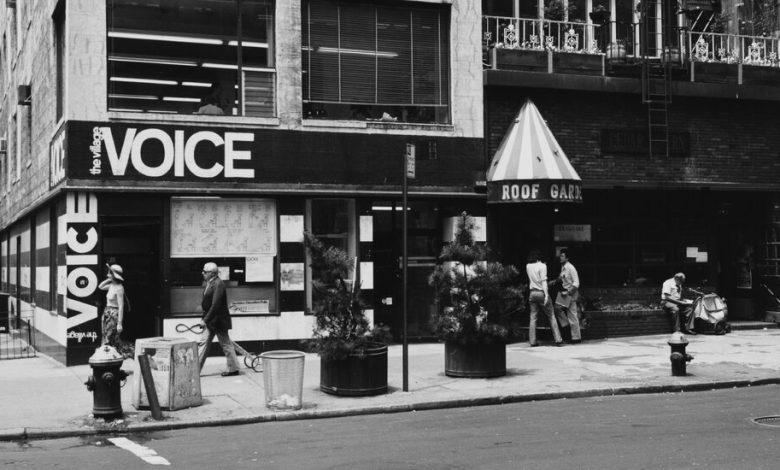What Was The Village Voice?

THE FREAKS CAME OUT TO WRITE: The Definitive History of The Village Voice, the Radical Paper That Changed American Culture, by Tricia Romano
Tricia Romano’s oral history of The Village Voice, the most important alternative weekly of the 20th century, is a well-made disco ball of a book — it’s big, discursive, ardent, intellectual and flecked with gossip. “The Freaks Came Out to Write” may be the best history of a journalistic enterprise I’ve ever read, in that its garrulous tone so mirrors the institution’s own.
A lot of the people Romano interviewed, former Voice writers, editors, photographers, designers and cartoonists, will probably wince, at times, at the text. Humiliations are recalled; toes are trod upon; old hostilities have been kept warm, as if on little Sterno cans of pique. Nostalgia remains at arm’s length. Yet the tone is familial and warm. Discontent was part of The Voice’s DNA. For nearly every staffer, working there was the best thing they ever did.
Founded in 1955 by a group of writers and editors that included Norman Mailer, The Voice was intended to be a newspaper for downtown, defined as below 14th Street in Manhattan. Its influence grew to be national. The Voice’s heroic period ran from the late 1960s through the early 1990s, though there were slack stretches in between. The publication still exists in a desiccated and mostly online form, in the same way that Sports Illustrated is existing until someone has the decency to unscrew the final lightbulb.
For many oddballs and lefties and malcontents out in America’s hinterlands (I was among them), finding their first copy of The Voice was more than eye-opening. Here was a dispatch from another, better planet. There was nothing else like it. It drove many to go into journalism, or to move to New York, or both. Others fed their heads as long-distance subscribers. You could count on each issue to have been scuffed up by the vicissitudes of the U.S. Postal Service. Some of the scuffing may have been half-intentional. As one art director puts it, the covers tended to look like “The New York Post on acid and run by communists.”
Like many publications, The Voice was divided into two halves. The front of the book was for hard news, and in back resided social commentary and criticism. Even further back were The Voice’s renowned classified ads. For decades people would line up on the night before publication, in the pre-internet days, to get first crack at the apartment listings. People found their whole lives back there. It was a counterculture bulletin board. Blondie got its drummer by advertising there; so did Springsteen. The sex ads were r-a-u-n-c-h-y.
You can approach this book as urban history. Romano has chopped it into brisk set pieces — how The Voice covered Robert Moses’s plan to run a speedway though downtown, the Stonewall riots, the early years of Rudy Giuliani and Donald J. Trump, the Central Park Five and so on. The Voice played rough. Annual features included “10 Worst Judges” and “10 Worst Landlords,” as reported by the muckraker Jack Newfield. Imagine the impact such lists would have today. Imagine the impact then.
We are having trouble retrieving the article content.
Please enable JavaScript in your browser settings.
Thank you for your patience while we verify access. If you are in Reader mode please exit and log into your Times account, or subscribe for all of The Times.
Thank you for your patience while we verify access.
Already a subscriber? Log in.
Want all of The Times? Subscribe.




